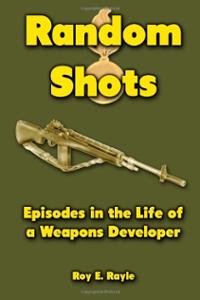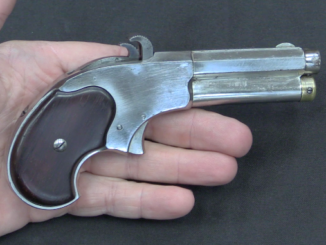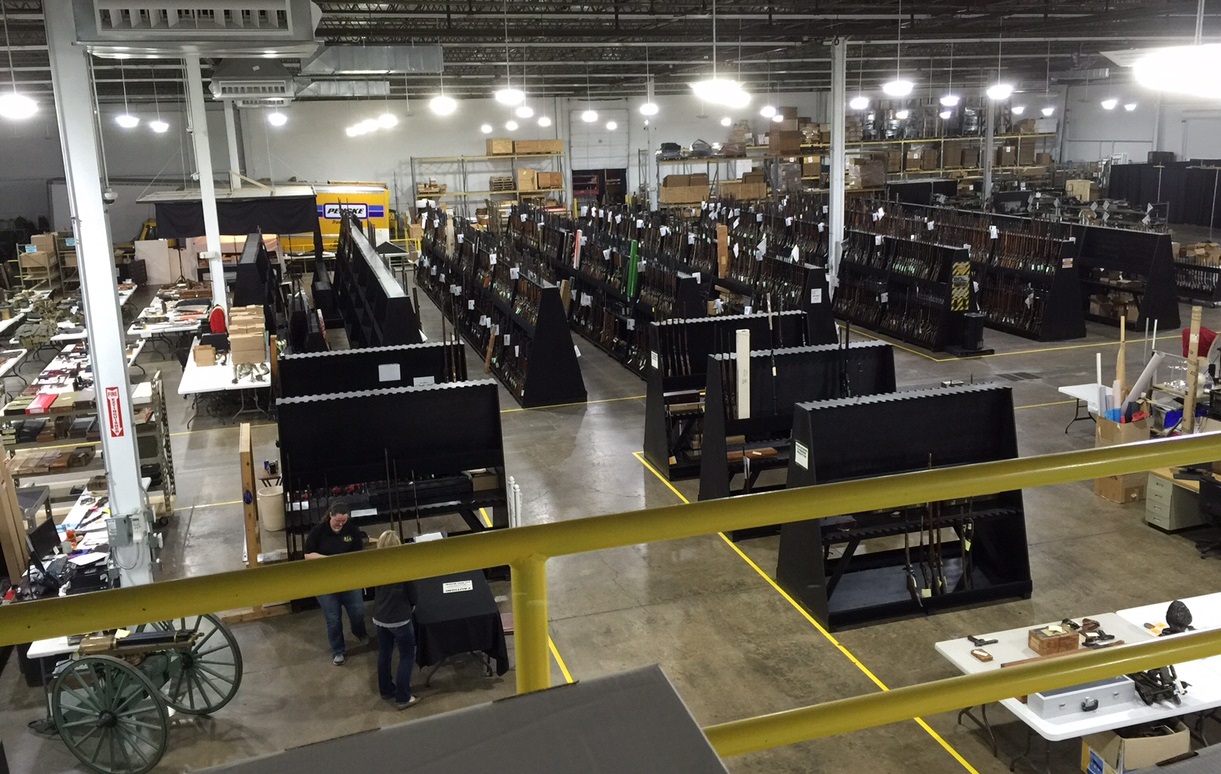 I first ran across Roy Rayle’s autobiographical account of his time as administrator of the Springfield Armory R&D Division while I was researching development of the M14 rifle. Rayle was a young mechanical engineer working at Aberdeen Proving Grounds as an ROTC 2nd Lt when the Japanese attacked Pearl Harbor in 1941, and served abroad in Europe and Africa through the war. Afterwards he received a Master’s degree from MIT in mechanical engineering and worked in Army Ordnance for several years developing artillery ammunition (including the 280mm atomic shells). In 1953, in the midst of the ongoing effort to replace the M1 Garand, he was assigned to oversee R&D at Springfield. During his administration, the Armory worked on the T44/M14, the M60 machine gun, the M61 20mm Vulcan cannon, the M83/M219 and M85 tank machine guns, and more.
I first ran across Roy Rayle’s autobiographical account of his time as administrator of the Springfield Armory R&D Division while I was researching development of the M14 rifle. Rayle was a young mechanical engineer working at Aberdeen Proving Grounds as an ROTC 2nd Lt when the Japanese attacked Pearl Harbor in 1941, and served abroad in Europe and Africa through the war. Afterwards he received a Master’s degree from MIT in mechanical engineering and worked in Army Ordnance for several years developing artillery ammunition (including the 280mm atomic shells). In 1953, in the midst of the ongoing effort to replace the M1 Garand, he was assigned to oversee R&D at Springfield. During his administration, the Armory worked on the T44/M14, the M60 machine gun, the M61 20mm Vulcan cannon, the M83/M219 and M85 tank machine guns, and more.
Random Shots has 170 pages of material, approximately half of which is dedicated to the development of the M14. Rayle was heavily involved in this, and his account makes for very interesting reading. The writing is definitely that of an engineer rather than a Literature major, which makes it dreadful for someone not interested in the subject, but simultaneously wonderfully descriptive for someone who really wants to know what the symptoms and solutions for various technical problems were. The story, as Rayle experienced it, begins basically after the peak of the T25/T47 program, when the rifle trials had come down to the T44 (modified M1) and the FAL, both in the T65 (7.62 NATO) cartridge. Rayle describes in detail the preparations for arctic testing of the rifles, and the subsequent flurry of work done by the Armory when the results gave the T44 the potential to actually win, instead of simply being a yardstick for the FAL to be measured against.
The account doesn’t show the big picture of what was happening nearly as well as Edward Ezell’s Great Rifle Controversy, because it is told from a single participant’s perspective. It does provide a lot of interesting detail and anecdote, though, and makes an excellent companion to the other material on this subject.
In the second half of the book, Rayle covers a number of other programs with short (5-15 page) chapters. These include:
- M60 – from its starting point, the German FG-42
- M79 grenade launcher – initially a testing rig and then backup to a developmental semiauto 40mm launcher
- M73/M219 and M85 tank machine guns – possibly the worst US adopted machine guns
- .50-cal spotting rifles and their associated recoilless rifles
- Developing the armaments for the gunship AC130s as a civilian after Army retirement
He also has a number of short but neat “random gun stories”, including work on Browning .50-cal aircraft guns, ammo mishandling, and diagnosing dud bomb fuses in Normandy.
For those who are interested in becoming (or already are) weapons designers, Rayle included four highly technical appendices:
- Comparison of forces in gas piston versus gas expansion systems (ie, M1 vs M14)
- Barrel strength and design, including composite steel/aluminum barrels
- Calculation of recoil travel (including bolt weight, spring force, etc) for automatic weapons
- A 1950 analysis of the primer-activated firearm action (ie, how the original M1 design worked) done by German small arms engineer Dr. Karl Maier (who developed the roller-delayed blowback system during WWII)
Happily, Random Shots: Episodes in the Life of a Weapons Developer was reprinted just last year (it was first published in 1996) and is nice and cheap on Amazon. For folks who want a more detailed preview, the entirety of the work is available through Google Books (the page count is different from my print copy because of different text size).




I’ve been hearing about the Russell Robinson type guns from users since I was a freshman ROTC cadet in 1976. I’ve NEVER heard anything good…
Are you sure that M73 had any relations to Russel Robinson?
from what I’ve read on British tank gun developments of WW2 and afterwards, Robinson guns were not that bad, though they never went past prototype stage in UK
Is that the same Robinson who had prototypes of a constant recoil SMG?
if we are speaking about British tank MG’s of 1943-49 period than yes, it’s the same Russel Robinson who built several weapons on teh ‘constant recoil’ principle, including shoulder-fired .50cal semi-auto rifles and MG’s
BTW, works of the Russel Robinson are excellent topic for the FW. If someone is willing to make a post, I can share some stuff (scans of older documents and articles) that I have on the subject.
Yep, I agree with that R.R. stuff. I also have older article in Fighting Firearm going some 15-20 years back. There is picture with him blasting away his modified hand-held (actually sitting on his shoulder) .50cal MG. He was exceptional mind, no doubts. This is indeed good topic to review; if you want to do it, go ahead.
I don’t have my Hogg “Machine Guns” handy, but I’m virtually certain.
I can’t speak to the functioning of the prototypes, but the coaxial and cupola mount guns adopted by the U.S. Army and Marines were a NIGHTMARE. EVERYBODY I know of who’s ever commented on them, including college classmates who went into the Armor branch say they were horridly unreliable guns. According to one friend, the M85 was marginally more reliable than the rifle caliber guns, but VERY hard to charge. He said that in order to charge the gun, a classmate at the Armor Officer’s Basic Course who was of comparatively slight build, literally had to firmly grasp the charging handle/chain and leap from the upper reaches of the cupola on his M48A5 so that his total body weight could charge the gun.
Thanks for the heads up Ian,
I think I’ll be adding that to my book shelf. It’s even less number of pounds sterling than it is US dollars, which is a very unusual occurrence.
Heads up on some Arbitrage opportunities, if you see one of these at a gun show
Amazon UK is showing the following prices
George E Frost’s Ammunition making, and insider’s story £543
Alsop & Popelinski, Brasseys essential guide £357 – £366 (It’s down from over £700 in summer of 2008!)
Just ordered a copy for my Library
Just came across this review of Roy’s book. I am the owner of Merriam Press, the publisher of Roy’s book. The original 1996 edition and later versions through 2006, were printed by me direct from the Word doc file to a laser printer and then bound, some in hardcover as well as a form of paperback, in 8.5×11 size. Editions from about 2006 on were professionally printed and bound in 6×9 inch size using a print on demand printer, Lulu, and in 2012 I switched the paperback printing to CreateSpace (lower pricing). For each edition, the book was reformatted, partly to fit the requirements of each printer, but the content remained the same, hence different page totals for the different editions.
I believe the M 73 was designed by Dick Colby.
Looks like this book has a few of things I’m very interested in. I’m sure the rest of it will be very interesting also.
I put it on my must buy now list.
Read most of the Google preview of the book. Had no idea how close the US was to adopting the FAL, knew it was a contender, but it looks like it was a 90% done deal at one point. I assumed that it was a case of go with the American design no matter what and only go through the motions of looking at the FAL–it was almost the opposite in the beginning of the trials.
It was also interesting how many times the author dismissed the idea of modifying M1’s (into box magazine .308 rifles) as being more expensive than making entirely new rifles–the Italians and their BM59 would seem to contradict that, but maybe it was less costly Italian labor at the time?
An interesting read, will ask for it for Father’s Day.
I should also note that the edition of the book on GoogleBooks is the 2006 edition and only a portion of the book can be viewed there.
Got my copy of this book the other week and have read thru it once. I found it worth the money. I learned tech things that I didn’t know I wanted to learn. This week I’ll start rereading it.
After reading it, I think maybe it’s best to design guns under the pressure of war or soon certain war.